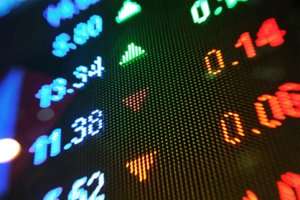With market results depressed by a sluggish economy and near-zero interest rates, there are few attractive options for investors, especially those looking for investments that produce a steady income stream. One of them may be closed-end mutual funds. "For people looking to enhance their returns, closed-end funds are one of the key investment vehicles to do that," says Morningstar analyst Mike Taggart. But as with all investments, it's important to understand the performance details of a closed-end fund before buying one.

[See The 10 Biggest Closed-End Funds .]
Many closed-end funds, for example, are designed to produce regular payments to investors. These payments may be similar to a dividend, but fund earnings don't always cover the full amount of such distributions, forcing fund managers to liquidate holdings. In effect, part of such a fund's distributions is a return of the investor's own capital—hardly a cause for celebration. Yet Taggart says many investors don't appear to understand that a good part of their fund's performance may be nothing more than a return of their own money.
As their name implies, closed-end funds are mutual funds that raise money through an initial public offering and then are closed to new investments. If you buy $1,000 in a regular mutual fund, the fund will take your money and invest it in the fund's basket of holdings, raising the amount of net assets held by the fund. By contrast, if you buy a closed-end fund, your money is used to buy fund shares and has no impact on its assets. The value of your shares certainly reflects the underlying performance of the fund's holdings. But it also reflects many other factors, including the track record of the fund's performance and investor demand for the shares. Also, closed-end funds trade like stocks, making them more attractive to many investors than traditional mutual funds.
Closed-end funds, Taggart says, also enjoy more latitude than traditional mutual funds when it comes to investing borrowed funds and using other tactics to increase the leverage of the fund's assets and boost returns.
[See Leverage, Volatility, and the Curious Case of 130/30 Funds. ]
Morningstar tracks about 625 closed-end funds, and Taggart says the sector has nearly $300 billion in total assets. The performance of closed-end funds can be confusing to investors, he explains. Most market listings for the funds describe their returns as yields, he says, because that's how the listings software is set up. But that "yield" is technically a distribution rate, and includes a fund's net investment income, its realized capital gains, and its return of capital to shareholders. This total is then divided by either its current trading price or the net asset value of the fund's investments. Calling this rate a yield implies that the fund has actually posted a rate of return. But if much of this rate comes from an investor's own capital, an investor may be misled into thinking the fund is performing a lot better than it actually is.
Still, Taggart says, it's those high stated "yields" that have drawn strong investor demand for closed-end funds. "Return of capital is a huge issue in the closed-end fund world," Taggart says. "People see these yields and just flock to the funds ... If the yield looks too good to be true, it probably is too good to be true," he advises.
Taggart says there are three fundamental questions that should be answered before you buy a closed-end fund.
1. What's the difference between a fund's market price and the net asset value of its holdings, and how has this ratio changed during the past three years? Many investors lock onto funds that trade for 10 or 15 percent less than the asset value of their holdings, he explains. They figure that over time, the trading value of the fund will trend up to its net asset value, and the investor will enjoy that gain plus the actual earnings of the fund. But there are a host of reasons such discounts exist. What if the fund has steadily traded at a 10 percent discount and continues to do so, Taggart asks. Where's the investor's profit then?
[See An Investing Guide to Closed-End Funds .]
Other funds may persistently trade at a premium to their holdings. This may deter some investors, he says, when the question they should be asking is what has happened to that ratio over time. For example, a fund with a 10 percent discount doesn't look so good if it turns out that the discount used to be 15 percent. But a fund that trades at a 5 percent premium may be an attractive cyclical buy if it turns out its historical premium is 10 percent.
2. What's the distribution rate of the fund and what are the sources of that distribution, particularly capital returned to investors? In addition to understanding these components, there can also be adverse tax consequences of certain fund strategies. Taggart is particularly critical of closed-end funds that focus on aggressive capturing of cash dividends from stocks. Such funds buy stocks just before the deadline to qualify for the next dividend. They then collect the cash dividend and immediately sell the stock, using the proceeds to execute other dividend plays. Taggart says it's simply not clear that such a strategy produces long-term benefits to shareholders. But by being active traders and short-term owners of stocks, such "dividend capture" funds can generate big trading expenses and high tax rates on dividend revenues.
3. How much leverage did the fund use to generate its results, how much of this leverage was reported under SEC rules, and how much leverage is achieved using non-standard tools? Taggart says the Investment Company Act of 1940, a cornerstone of mutual fund regulation, requires the formal disclosure of only some of the leverage tools employed by closed-end funds. "The rest is reported on their balance sheets," he says, "but many investors don't know what to look for or how to analyze the balance sheet."
Of the 625 CEFs that Morningstar tracks, 464 use some form of financial leverage. "Our thinking on leverage has changed dramatically in the past year to 18 months," Taggart explains. "Over time, leveraged funds tend to outperform, though of course there are exceptions. Our main point, though, is that investors need to be alerted to the full scale of the leverage ... so that they have some indication of the volatility that should be expected across a market cycle. They also should be educated that they really should expect to hold these things over a market cycle. It's the exceptional five-year period where leverage underperforms non-leverage."
Compare Offers
Compare Offers



Post a Comment